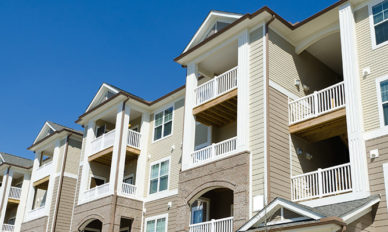
Cybersecurity in the Age of AI
Since ChatGPT was released just over a year ago, business leaders in nearly every industry are increasingly investigating the potential uses of artificial intelligence (AI). Although AI …Continue Reading

Since ChatGPT was released just over a year ago, business leaders in nearly every industry are increasingly investigating the potential uses of artificial intelligence (AI). Although AI …Continue Reading

The affordable housing community, specifically HUD Section 202 for elderly housing, is experiencing an avoidable crisis. This crisis originates from the expanded scope of service and responsibility placed upon affordable housing organizations by the U.S. Department of Housing and Urban Development (HUD). HUD Section 202 for elderly subsidized housing specifically states that the program provides options to allow seniors to age in their community by providing independent elderly living in an environment that offers support for community-based services, such as cleaning, cooking, and transportation (Perl, 2010). Yet HUD’s most recent Minimum Property Standards for Multifamily Housing handbook states that all elderly multifamily communities must install call-for-aid systems (HUD, 1994). Therefore, the requirement for continuous call-for-aid systems, such as pull cords, forces affordable housing owners and operators to engage in the practice of nonstop-24/7-resident monitoring. In our highly litigious society, the requirement for continual resident monitoring represents a significant liability for potential future legal action. Insurance companies have taken notice of this potential liability and have responded with action. Continue reading

Affordable housing developments are a critical component of building a strong economy, and the need for affordable housing today is urgent. According to the National Low Income Housing Coalition’s 2022 Report, the U.S. is facing a shortage of 7 million affordable rental homes/units.
While this need creates challenges for our communities, it simultaneously creates significant opportunity for affordable housing developers. Given the increasing number of projects, our team has determined the following liability considerations and risk management strategies. Continue reading

Businesses in every industry are facing cyber threats with increasing frequency and severity. It is no longer a question of if your organization will experience a cyber incident, but when. From employment/HR data breaches to operations disruptions to wire transfer fraud and more, today’s landscape is brimming with real threats promising real and costly business impacts.
Earlier this month, our team in Nashville pulled together a group of industry experts for a panel discussion to discuss the current cybersecurity environment and best practices for businesses to prepare for and respond to potential incidents. Continue reading

FEMA has introduced the largest reform to the National Flood Insurance Program (NFIP) rating system since its inception in 1968. The NFIP program premium will now be determined by the risk assessment at individual property levels versus the current more standardized, one-size-fits-all approach. Continue reading